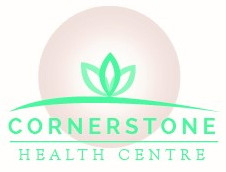Georgetown Cervical Spine Motion, Osteophytes, and Agings Effect
Aging gets blamed for a lot of ills…including neck motion changes. You are not alone if you find that you do not turn your head quite as easily or as far as you used to or that you don’t flex or extend it in the same way as you once did. Degenerative discs and vertebrae and associated osteophytes play a role in limiting movement. Dr. Butwell is here to help your neck motions with gentle chiropractic treatment!
CERVICAL SPINE MOTION
Physiological motion of the spine sounds like something good, does it not? It does! In the cervical spine, researchers have noted how a consistent sequence of cervical segmental contributions function when the neck moves. This sequence is common in 80-90% of young healthy persons. But what about the motions in aging spines of older folks? Decreased motion has been related to aging. A newer study by some curious researchers designed a study to see if such consistent neck motions in elderly asymptomatic persons resembled the motions in asymptomatic young persons. They didn’t. They concluded that aging - as demonstrated by the motion patterns seen in elderly asymptomatic persons - was associated with loss of consistent motion patterns as seen in young asymptomatic persons. For example, the consistent pattern in young asymptomatic persons was found in only 10% of the older persons at T1 and 0% at T2. (1) As our Georgetown chiropractic friends and family age along with us, we’re not alone in feeling motion changes. Dr. Butwell delivers gentle Cox® Technic treatment in order to allow as much motion to spinal segments as they’ll allow. If you see limitations in your neck motions, let us know! We can examine you to find the usual culprits that may be the cause.
WHAT COMES WITH AGING THAT LIMITS NECK MOTION: Osteophytes
Osteophytes are frequently seen in elderly folks’ vertebrae of the lumbar and cervical spines. Anterior osteophytes continue growing and eventually provoke neck pain or back pain. Since osteophytes are so common and lead to such pain, researchers found a way to predict the mean time to onset of pain and the path of degeneration that occurs in these vertebrae based on data from following patients’ osteophytes for 9 years. (2) We know our Georgetown chiropractic patients with osteophytes aren’t as curious as to how long ago their osteophytes started, but rather how our chiropractic care can help! Here’s an interesting case concerning osteophytes and relieving chiropractic care: Osteophytes may contribute to patients’ developing dysphagia (aka difficulty with swallowing). A case report detailed the presentation of a 53-year-old woman with a sore throat, difficulty swallowing solid foods, and acid reflux. Her imaging revealed anterior osteophytes as well as kyphosis (abnormal curvature) of her cervical spine and thoracolumbar scoliosis, any of which could contribute to her dysphagia. Six months of chiropractic care resolved her issues. (3) Chiropractic care works!
CONTACT Dr. Butwell
Listen to the PODCAST with Dr. Shay Corbin on the Back Doctors Podcast with Dr. Michael Johnson as he shares the effective, gentle treatment with the Cox® Technic System of Spinal Pain Management for his musician patient dealing with neck and back pain.
Make your next Georgetown chiropractic appointment with Dr. Butwell. Bring your aging spine, your less-than-flexible cervical spine, your immobile neck to our clinic. We can work toward better motion!

